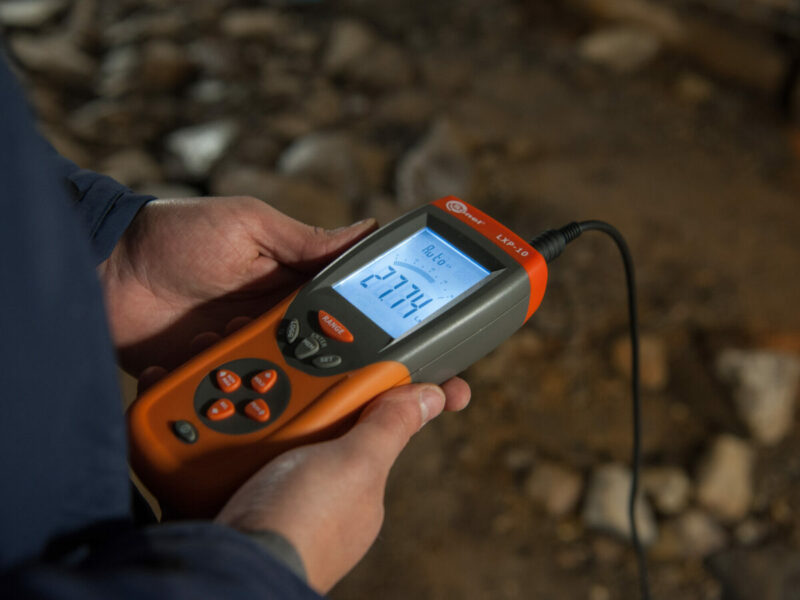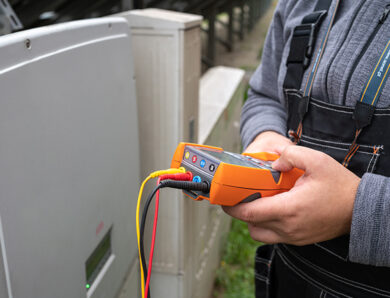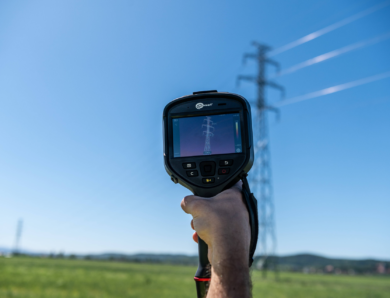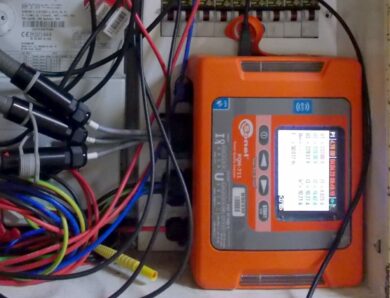
Take care of good lighting in the workplace
The relationship between light intensity and color of light, and the performance of employee is confirmed by the results of scientific research. They show that by increasing the illuminance from 300 to 500 lx in many workplaces, you can achieve an efficiency increase of 8%, and increasing the lighting intensity to 2000 lux increases efficiency by up to 20%. However, the appropriate color of light positively affects the psyche, well-being and occupational safety. The article presents the qualities of good lighting for human work.
Introduction
The quality of work is very much dependent on the lighting we have. Well-chosen lighting can significantly increase the efficiency of operation, as much as bad lighting can reduce it very much. Over 80 percent of all information reaches the human brain through the eyes. Poor visual conditions are obviously an obstacle to work. They have a negative impact on our well-being, reduce productivity and lead to mistakes and accidents. An employee who sees well and feels comfortable in the room is more motivated, more focused and more effective. The quality of work increases, and the number of errors made measurably decreases. The risk of accidents is also reduced.
It is worth remembering and enforcing your rights from the employer, because the employer is obliged to provide proper lighting of the workplace to his employee.
How to choose the right light for the workplace?
In the industrial sector, the most important function of lighting is to properly illuminate the workplace. By determining the criteria for selecting the right lighting system, we take into account not only the lighting parameters, the size of the space, access to daylight, the requirements of individual workplaces or the industry. The standards and regulations as well as the recommendations of the International Lighting Commission (CIE) are equally important, defining optimal conditions for lighting rooms depending on the way they are used. Choosing the right lighting system is therefore one of the most important decisions an enterprise owner must take.
The best kind of lighting in the workplace is natural daylight. However, in the vast majority of latitudes, it is virtually never enough to properly illuminate the office. International standards and recommendations clearly determine the required light intensity depending on the workplace. Proper operation in office rooms is based on the selection of optimal lighting, which should be designed in an uncompromising and reasonable manner.
Some important issues should be taken into account in the lighting design work, such as the size of the office space, the nature of the work (e.g. sitting at a computer) and the working mode (night or day). It is also very important to determine whether the office space is built on an open plan with a fairly large area, or rather is composed of smaller, intimate rooms with several work stations. Proper lighting at work should be tailored to the purpose of the space and the needs of its users. The lighting of a conference room or a large call center, or even a private office, will look slightly different. Good workplace lighting should properly combine natural light with an artificial one, meeting the requirements for quality and technical parameters, which include:
- light parameters, i.e. color temperature, Ra color rendering index, luminous flux and angle of incidence of light
- electrical parameters, i.e. power, supply voltage, power factor, protection class;
- operational parameters, i.e. IP protection, lifetime, energy efficiency.
Particularly important in the choice of lighting are parameters: the value of lighting intensity, color rendering index and color temperature. Only light sources with a high color rendering index ensure good color reproduction and good color contrast. The color rendering index Ra has a maximum value of 100, and it is assumed that the good quality light used in rooms intended for work should have a coefficient on the minimum level Ra> 80, which is defined in EN 12464-1. No standards indicate what exactly should be the value of the right color temperature, which has a direct impact on our mood and the atmosphere prevailing in the illuminated room. Lighting, where hot-light sources are used, can cause drowsiness and relaxation, while those with a cold temperature stimulate the body to work. In order to properly match and determine the color of light, the color temperature measured in Kelvin is used. According to this measure, the following types of colors are distinguished (Fig.1).

Fig. 1. Color temperature of light
Typically, daylight is used in the office space (5000-6500 K). This type of light has a positive effect on the mood and degree of concentration. This is particularly important in autumn and winter, when the dark falls earlier and we use artificial light sources for a longer time.
The value of light intensity depends primarily on the amount of light emitted by sources such as lighting fixtures. Factors that can limit the value of intensity at workplaces are the type and condition of luminaires, the placement of objects in the place of work, the angle of incidence of luminous flux or soiling of the work surface and air pollution that occurs, for example, in woodwork shop or paint shops. Therefore, already at the time of designing workstations, critical points and factors that may influence the subsequent value of illuminance should be taken into account. Examples of interior lighting requirements (operating light value and color rendering index Ra) are summarized in table 1.
Table 1. Examples of lighting requirements
| No. | Type of interior | Em [lx] | Ra |
| 1. | Circulation areas and corridors | 100 | 40 |
| 2. | Dispatch packing handling areas | 300 | 60 |
| 3. | Rest rooms | 100 | 80 |
| 4. | Welding | 300 | 80 |
| 5. | Rooms for medical attention | 500 | 90 |
| 6. | Preparation and baking | 300 | 80 |
| 7. | Bookshelves | 200 | 80 |
| 8. | Classrooms, tutorial rooms | 300 | 80 |
| 9. | Customs and passport control desks | 500 | 80 |
| 10. | Ticket and luggage offices and counters | 300 | 80 |
| 11. | Reception/cashier desk, porters desk | 300 | 80 |
| 12. | School canteens | 200 | 80 |
| 13. | Slab Store | 50 | 20 |
The influence of light on human safety
Men spend an average of 90% of his time in enclosed spaces, lit with artificial light. Therefore, it should be checked whether the sources and lighting fittings that we have at home, in the office, as well as those that are installed in schools, universities, offices and wherever we are, produce light that is safe for us. The installed sources and fittings in the facilities in which we are located may not meet the photobiological safety standard EN 62471 [2]. This standard indicates threats to the human eye and skin. These are hazards caused by UV radiation, blue light, infrared radiation, as well as thermal hazards of the skin and the retina of the eye. Caring for the safety of people, lighting designers should take care that the sources and fittings installed by them come from a reliable producer (with a confirmed declaration of conformity).
Inappropriate lighting, unmatched to the specificity of working conditions, is the most common cause of accidents. Insufficient visibility in the transport industry, in warehouses where, for example, forklifts are moving, it can cause very serious accidents. Operators should have an unlimited field of view, and employees should be aware of approaching vehicles. When designing warehouse lighting, the best solution to its specificity should be used. Consider mounting fixtures in the form of a quick assembly line.
This solution allows good lighting of the side parts of the warehouses, improves the visibility of information boards mounted on the walls. Attention should also be paid to the value of the UGR glare evaluation indicator, as well as the Ra color rendering index, because the appearance of a particular object may change, depending on its lighting. Investing in the appropriate design and implementation of lighting in warehouses is important for the safety of people working in it, but also reduces financial losses caused by destruction or damage or even destruction of property.
What to measure the intensity of lighting?
Illumination measurement is performed using a luxmeter. The company SONEL S.A. specializes, among others, in the production of devices for measuring illumination. Sonel LXP series luxmeters meet the requirements for matching the spectral sensitivity of the human eye and thanks to the filters used they are characterized by a very small angular alignment error. The product family is divided into three models – Sonel LXP-2 for basic lighting measurements in workplaces, Sonel LXP-10B dedicated to emergency lighting contractors and Sonel LXP-10A meeting class A requirements, for everyone who wants the most accurate lighting measurements. All Sonel LXP series products are designed to work in difficult industrial conditions. Their casing has been made in two-component technology, where the care is durable ABS protecting against the effects of falling, coated with an elastomer, which ensures secure holding of the device in hand. The heart of the device is a measuring probe, which thanks to the technology used allows for long-term use of the device. Each meter is delivered in a transport case with full documentation and calibration certificate, which confirms that the customer receives a tested device that meets all manufacturer’s declarations. In the offer of SONEL S.A. there is also the FOTON 3 software that allows you to perform measurement protocols, conduct a schedule of measurement work and invoicing services.
Summary
Good quality of light, i.e. adequate illuminance, improves employee concentration, reduces the number of mistakes made by them, which provides work safety, quality and efficiency.
In addition to the most important function, which is to provide work safety, lighting in the office, can also act as a signpost, for example indicating escape routes, or by dividing a large space into individual zones of different purpose. Furthermore, the light is an ideal decorative element, thanks to which we can easily emphasize the character of the interior, creating a friendly mood and atmosphere.
Literature
[1] EN 12464-1, Light and lighting – Workplace lighting – Part 1: Workplaces indoors.
[2] EN 62471, Photobiological safety of lamps and lamp systems.
Authors: Dorota Kołakowska, Adam Szczepanik – Sonel S.A.
Products mentioned in the article:







No Comment